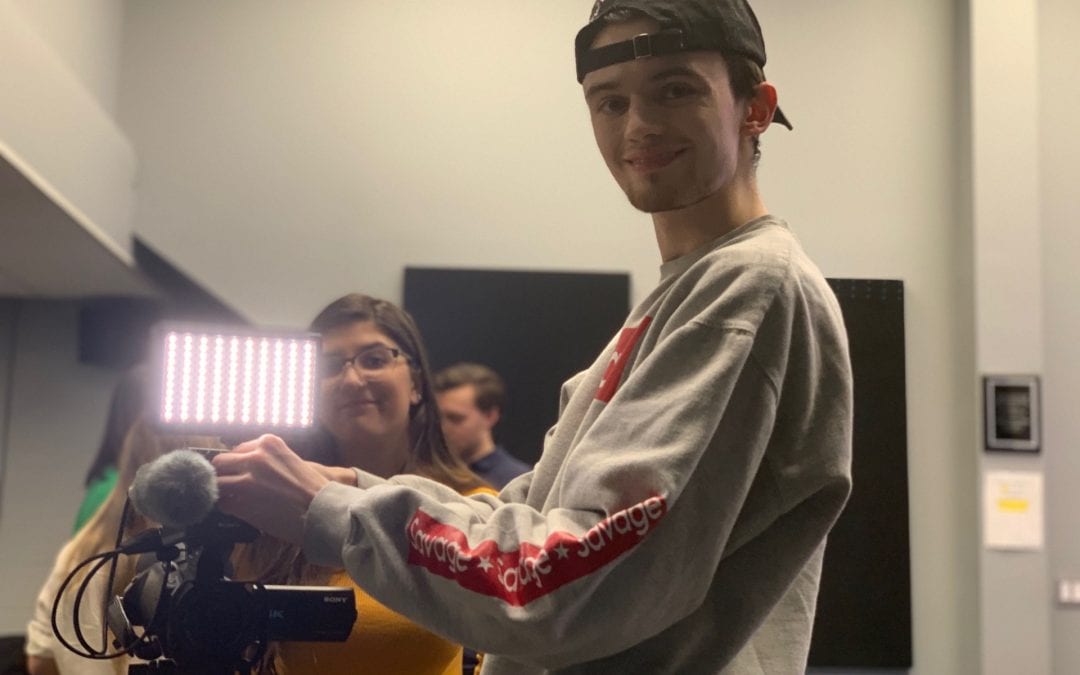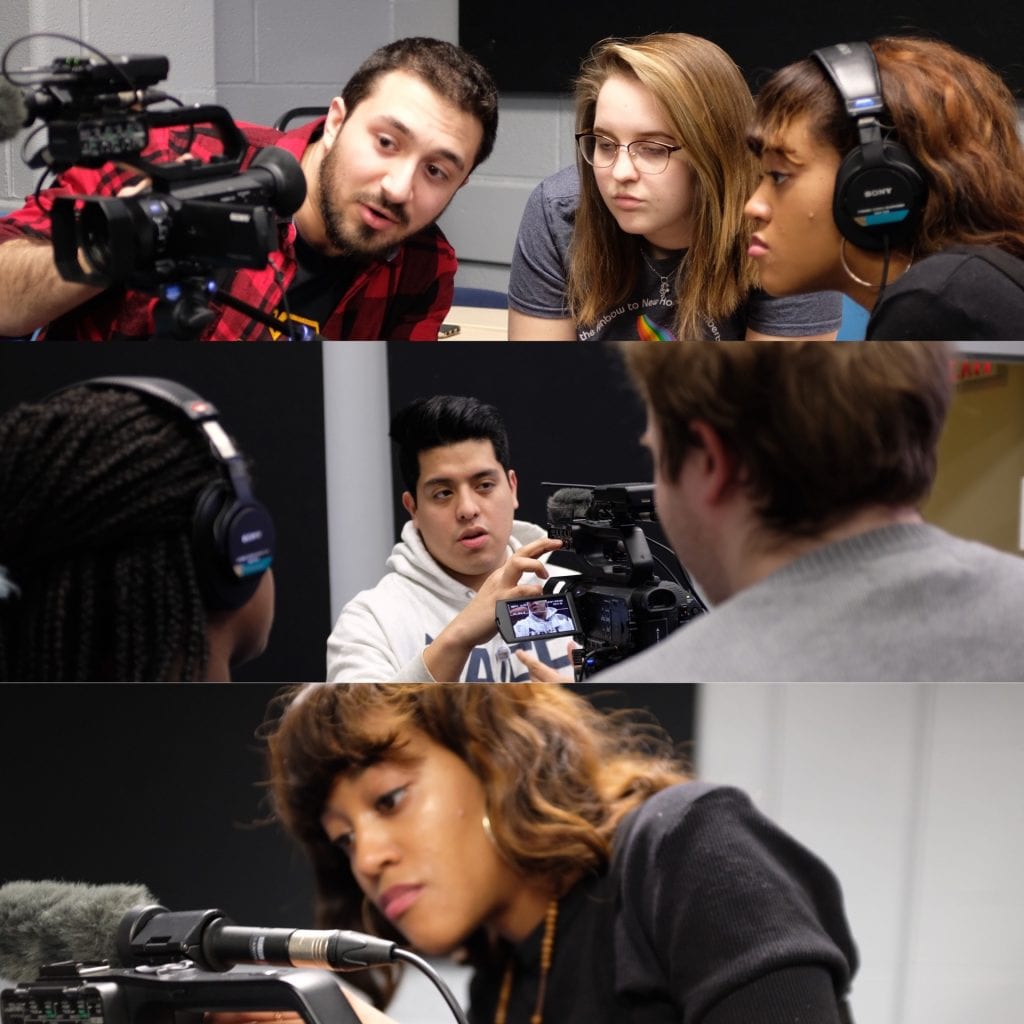Our journey to Hawaii is less than a month away and our team has been in constant preparation in pre-production. This week, our class meeting focused on the importance of camera equipment and learning about the Hawaiian language and culture.
To open, Dev, Blake, and Joe demonstrated how to set-up a seated interview. That includes making sure the framing and audio are perfect.
The class split up into small groups, each with a team leader, that have past production experience. They instructed students on the most important aspects of the camera: focus, white balance, framing, and picture composition. Then, team leaders instructed each of the members in the group to dismantle a fully equipped backpack of all the tools necessary for filming.
Professor Guarneri, otherwise known as Lou, taught the lighting portion of the class and its importance while filming. Towards the end of our class meeting, we took 45 minutes to practice each of our camera skills before being put to the test on timeliness.
This was to make sure that everyone is familiar with each piece of equipment and its importance. The process must become second nature to us when the production phase happens in Hawaii.
NEXT, Culture!
As we learned more about the camera process, the team also focused on the history of the Hawaiian culture. The Hawaiian language, “Ölelo Hawai’i”, is a Polynesian language and is considered one of the oldest living languages in the world! Hawaii is also the only state in America to have two official languages, Hawaiian and English. A third language, Pidgin, is frequently spoken; it is a slang combining various words from the island life and culture.
The Hawaiian language is based on English letters with eight consonants and five vowels. There are 12 letters in the Hawaiian alphabet: A, E, I, O, U, H, K, L, M, N, P, and W. There are four basic rules of the language:
- all words end in a vowel,
- every consonant is followed by at least one vowel,
- every syllable ends in a vowel, and
- two consonants never appear next to each other.
Further learning about Hawaiian language and pronunciation:
A: “ah”
E: “ay”
I: “ee”
O: “oh”
U: “oo”
For example, look at the word O-H-A-N-A. Notice, that every other letter in the word is a vowel and each one is made from the limited choices within their alphabet. Every word that you will come across in this language will follow the same pattern.
Even though only 0.1% of the island actually speaks the language, there has been a new yearning within the last 40 years to learn the language once again. You can now obtain a Masters at University of Hawaii in the Hawaiian language and it is even being taught at immersion schools!
For the sake of our class, we will be referencing the language app Duolingo to assist us in the pronunciations of the Hawaiian language. It is a free app in the app store. We will be using it to learn how to pronounce unfamiliar words and when we are actually on the island.
By the time the class closed on Tuesday, each student was confident in their ability to assemble and dismantle a camera. Not only this, but we felt more comfortable interacting and working with one another. The teamwork and support each student had for each other left us feeling more prepared and readier for Hawaii.




